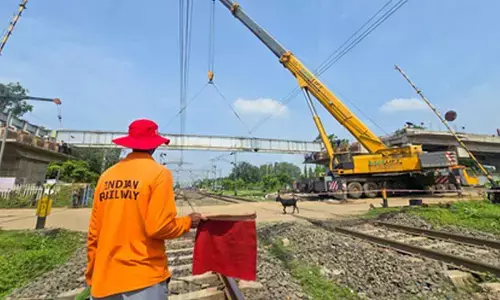Amaravati: Poor safety protocol cause of LG Polymer gas leak, finds Panel

High-Power Committee cheif Neerab Kumar and other members submitting their report on Vizag gas leak to Chief Minister Y S Jagan Mohan Reddy at his camp office in Tadepalli on Monday
Poor safety protocols and total breakdown of emergency response procedures were the root cause of the May 7 styrene gas leak in the LG Polymers unit in Visakhapatnam, in which 12 people were killed and hundreds fell sick
Amaravati: Poor safety protocols and total breakdown of emergency response procedures were the root cause of the May 7 styrene gas leak in the LG Polymers unit in Visakhapatnam, in which 12 people were killed and hundreds fell sick.
Citing multiple inadequacies on the part of LG Polymers, the High Powered Committee constituted by the AP government, faulted the "slackness of management" for poor safety protocol, poor safety awareness and inadequate risk assessment response that aggravated the situation.
The HPC, headed by Environment and Forests Special Chief Secretary Neerabh Kumar Prasad, submitted a 4000-page report to Chief Minister Y S Jagan Mohan Reddy here on Monday.
Later speaking to the media, Neerabh said, "The accident occurred due to uncontrolled release of styrene vapour from the M6 tank at the LG plant, which qualifies as a major accident under the Manufacture, Storage and Import of Hazardous Chemicals Rules, 1989.
He said that poor design of the tank, inadequate refrigeration and faulty cooling system, absence of circulation and mixing system, poor process safety management system and total breakdown of the emergency response of the procedures were the root causes of the accident."
The HPC also observed that the factory has "absolutely no stocks of inhibitors and negligible stocks of terminators, which could have been used to minimise the impact of the accident, if not neutralise it.
"The temperature in the tank rose substantially. It was a tank with small vents. The rise in temperature caused the styrene liquid to eventually vaporize and increase the pressure," the HPC noted.
The committee also observed that the alarm system (at the plant) was not used despite there being a total of 36 activation points, including one at the factory gate. Using the alarm could have alerted the people in the vicinity (from the impending danger), it added.










